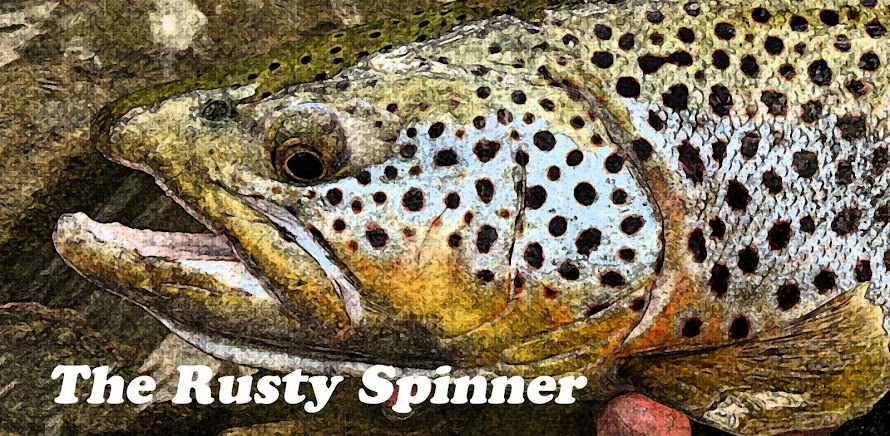I did something a few moments ago, that I haven't done since this
blog's inception. I reread a few of my past posts, and having done so, I realize that my long diatribes offer little in the way of useful information. Nearly all my posts are particularly personal and some are entirely anecdotal. More than a few are verbose to the point where I imagine readers, lonely bug-chuckers all, falling asleep at their keyboards with puddles of drool spreading out across their chests. Even though I began this blog strictly for my own sake, I would like those few readers who occasionally visit to take something away they might genuinely use. As such, I've decided to run a weekly (bi-weekly,
tri-weekly, whenever) fly tying column, which I've ostensibly titled,
Favorite Flies. I realize that neither the idea nor the title is particularly original, but
Favorite Flies does get to the point.
Once every so often I'll post the recipe and instructions for one of my favorite flies. If I can get a grip on the photography, I'll post photos as well (I'm new to macro-photography, and I must admit that I am struggling). The flies I'll showcase won't likely be anything particularly innovative, but you won't usually find replicates in an
Umpqua or Montana Fly catalog.
To the fly ...
I first saw this week's submission in the streamer box of Shawn
Brillon, a good friend and the fly-tying product developer for
Orvis. As best I can tell, the pattern draws on the work of Jack
Gartside, the Heron series frequently found on the streams of New England, and various Pacific Northwest
steelhead patterns. It is relatively easy to tie, but can be a little tricky to tie well (don't crowd the head). In white and barred-white, it is one of my top two streamers. When fishing this fly, remember that it is meant to be stripped ... like
freakin' crazy. Of all the streamers I fish, this one provides the most visual experience in that it runs fairly shallow, and often draws charges from some very large fish.
Enjoy the tying. Good luck with the fishing.
The Bou Bou (aka: Das Big Bou, DatsalottaBou, Mayor McBou)
Hook: #6-#2
Tiemco 9395 (a vicious streamer hook)
Weight: Lead or lead-free wire covering the rear 2/3 of the hook shank
Thread: 8/0 color to match body (fine thread helps reduce bulk and make a neat head)
Tail: SLF Hank color to match wing and cut to the length of the hook shank
Body: SLF Hank dubbed or wrapped 2/3 the length of the shank
Wing: Two or three marabou blood quills, tied in tip first and wrapped forward like hackle with the natural curve to the rear
Veil: Gadwall flank, either folded or stripped on one side and flared back over the marabou
Eyes: Jungle Cock (optional, but boy do they ever look good)
The key to forming a nice small head on this fly is to leave plenty of space for the
gadwall, and to wrap only the thinnest stems near the eye of the hook. The fine thread is a real help. I also strip the fibers from one side of the gadwall, both to reduce bulk on the head and give the fly a slightly sparser appearance.





















